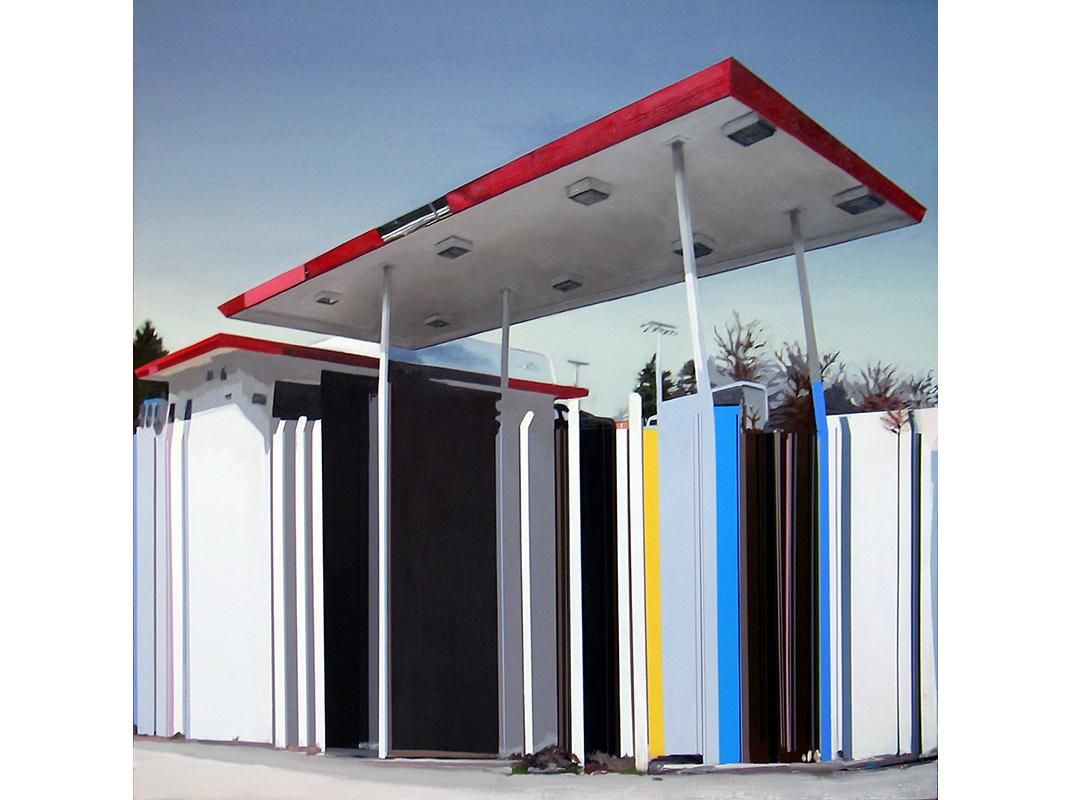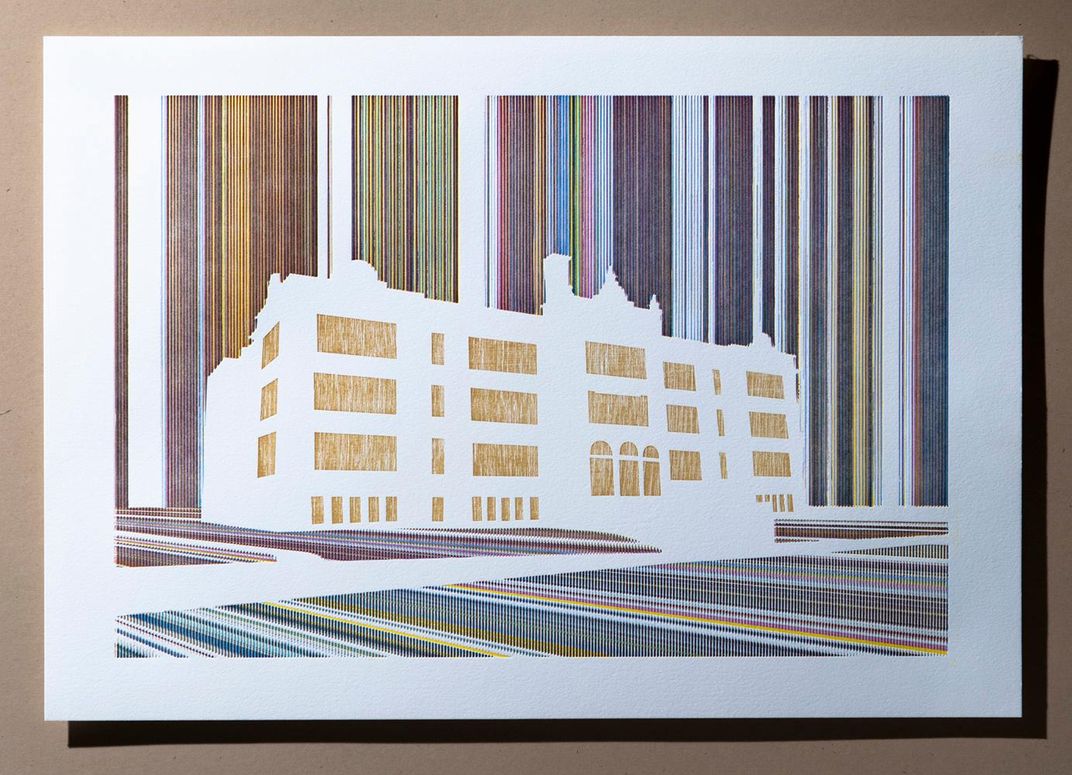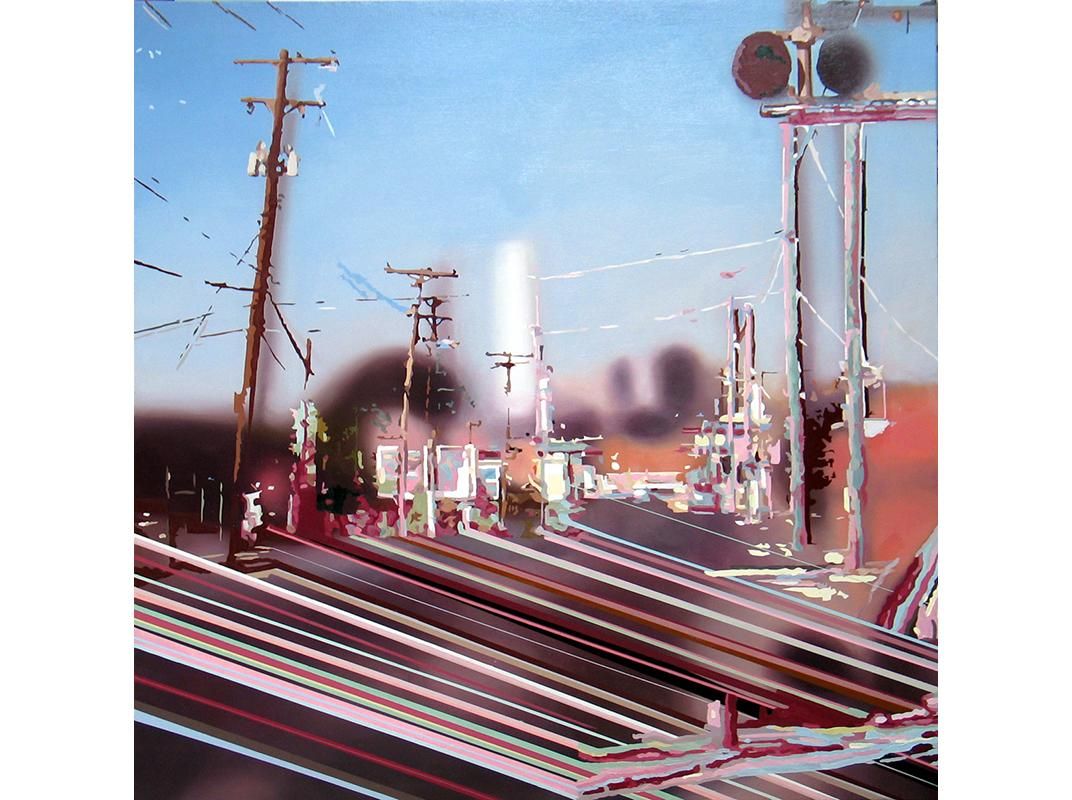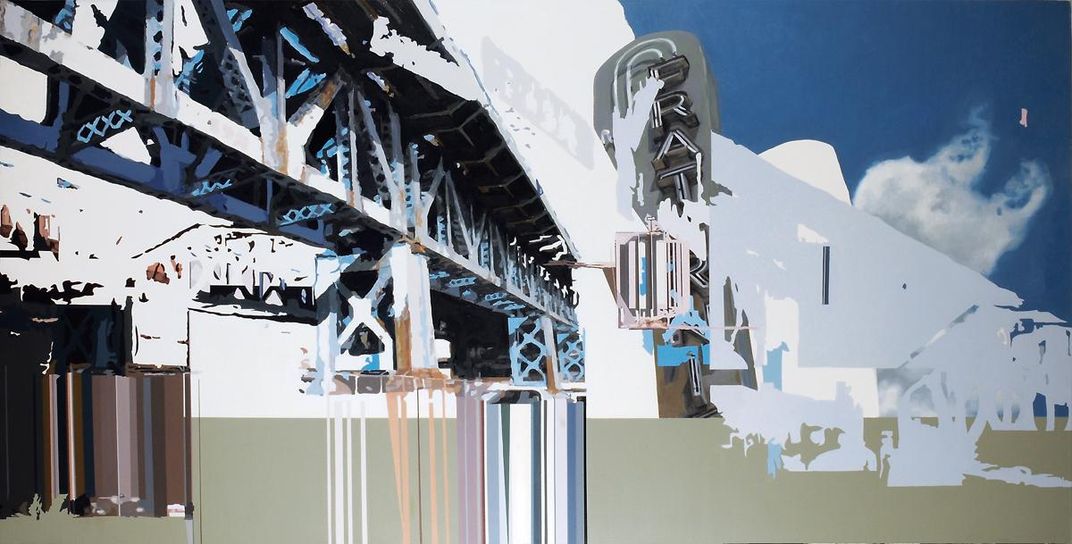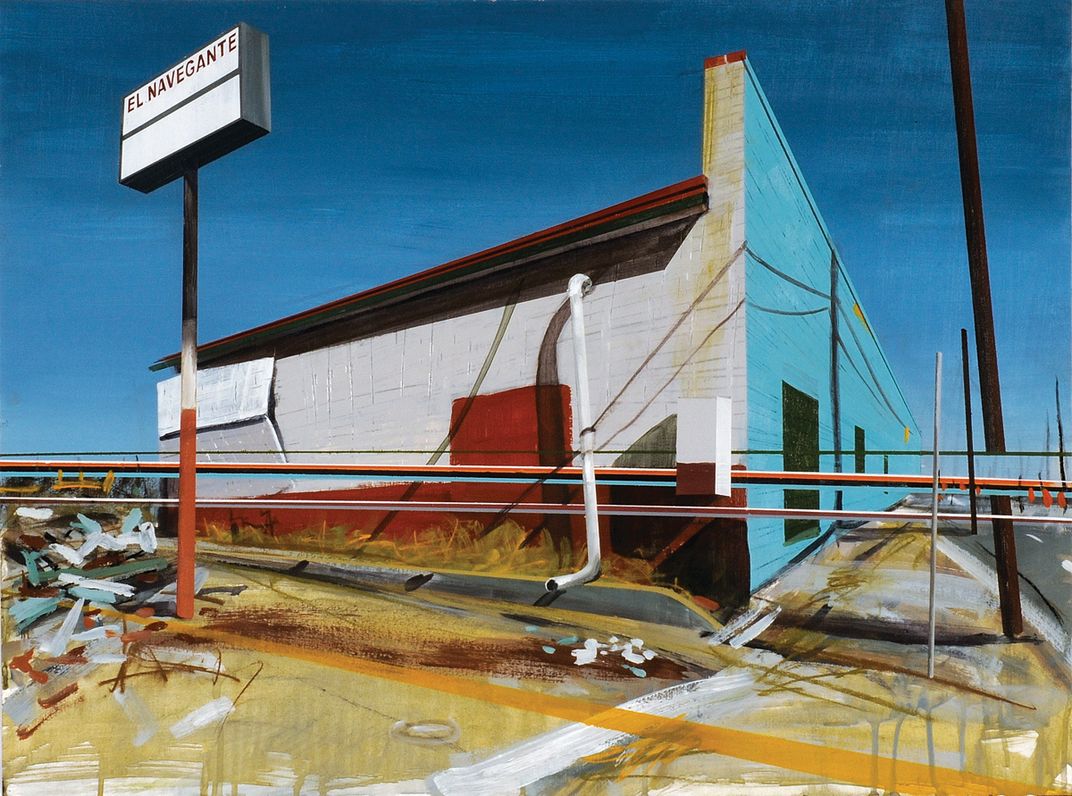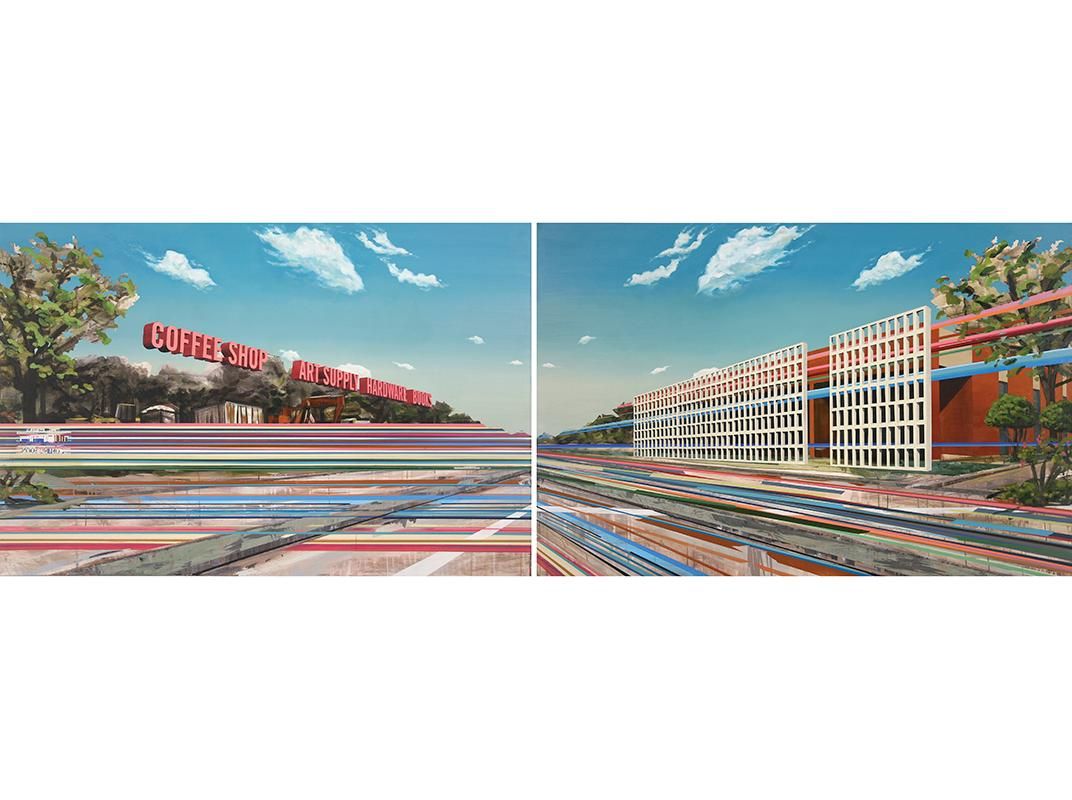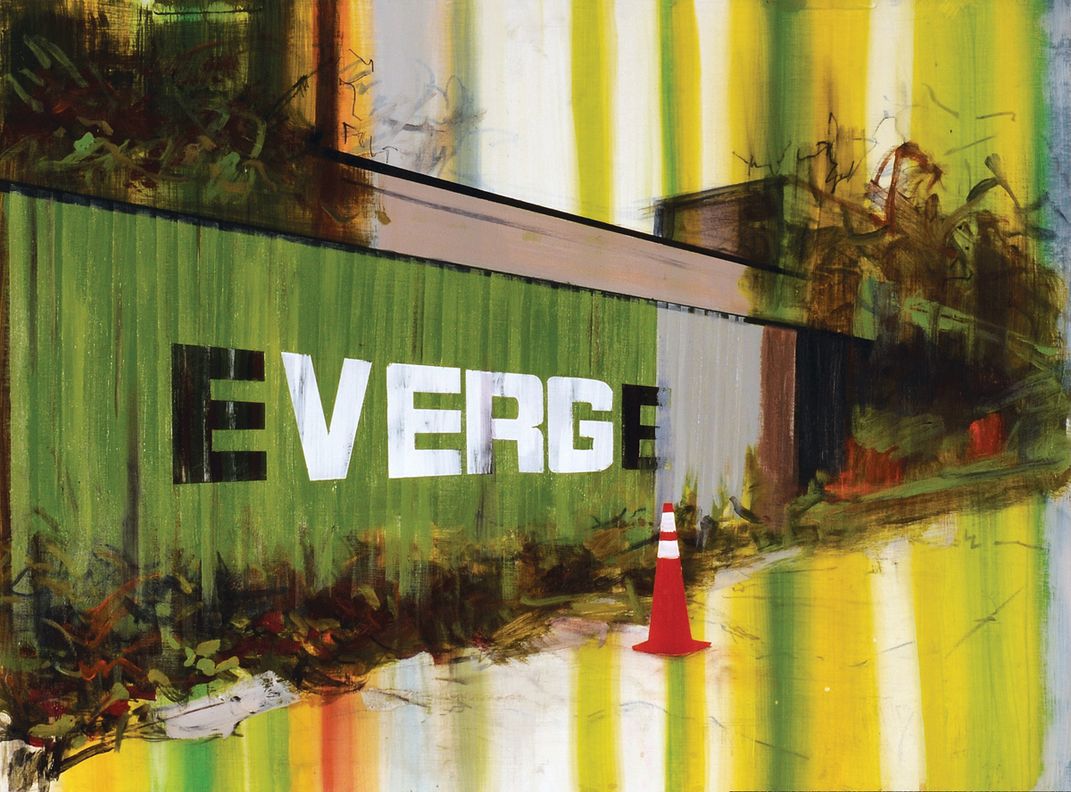These are the Forgotten Places in Your Neighborhood, Painted
Artist Kim Cadmus Owens celebrates the places we ignore
How often do you notice that brownish building around the corner from your dentist’s office? For the artist Kim Cadmus Owens, the answer is not enough. Owens is deeply mindful of the places we pass by day after day without paying any attention to them. “One day the light hits just right and I think, How come I never saw it like that before?” she says.
And so she paints them, first sketching a site from memory and then photographing it through the seasons. She later compiles the hundreds of photos to make a flash animation. It’s a process that can take years.
“I try to think about how we move through space and how we physically experience something, which we do less and less. These paintings don’t have a single soul in them, but they’re about us and how we relate to one another,” she says.
In her 4- by 13-foot diptych Smoke and Mirrors: Coming and Going, Owens shows, on the right, an anonymous landmark (later torn down) near her studio in Dallas, while the left side gestures at what the empty space might become. The landscape is woven with brightly colored lines that call to mind the filtering role that technology plays in how we experience modern life.
Technological anomalies are familiar language for anybody who has spent time on a computer or digital device, she says. These broken LCD screens and frozen iPhone interfaces used to irritate Owen, but she soon learned to see them as positive, instead of destructive.
“It takes glitches to bring us back to the physical world,” Owens says. “I want to take these disruptions and use them to engage people.”
Her painting is on display at the Crystal Bridges Museum of American Art in Arkansas as part of their State of the Art exhibition, which focuses on contemporary art by artists who have received little or no national attention. Owens work is part of a collection of 227 works from more than 100 artists.
